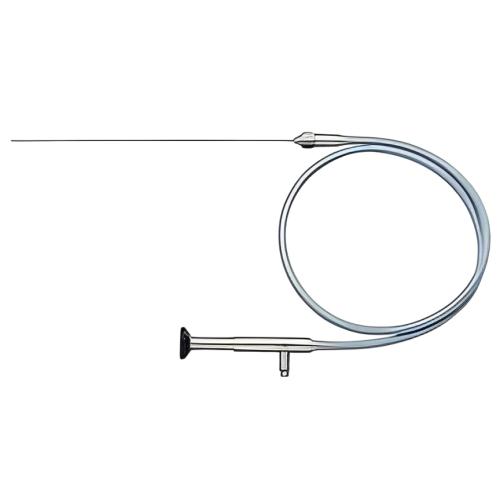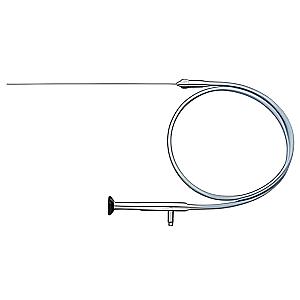The Karl Storz 11630 AA model is a miniature straight forward telescope designed for fetal medicine examinations, particularly for visualizing the posterior placenta during the second trimester of pregnancy. With an outer diameter of 2 mm and a length of 30 cm, this semi-rigid telescope is compatible with various Karl Storz accessories, such as the straight operating sheath 11605 Fo and the straight examination sheath 11605 Kc. It provides superior image quality, ideal for precise and minimally invasive diagnostic procedures.
Miniature straight forward telescope 11630 AA - Perfect Condition


Offer Details
Options :
karl storz 11630 AA neuro semiflexible telescope endoscope 0° degree 2 mm 30cm
Description
Miniature Straight Forward Telescope 11630 AA – A Precision Instrument in Fetal Medicine
The Karl Storz 11630 AA miniature straight forward telescope is a high-precision medical tool, specifically designed for fetal medicine, especially for examining the posterior placenta during the second trimester of pregnancy.
The 11630 AA is a semi-rigid telescope with an outer diameter of 2 mm and a length of 30 cm, allowing access to difficult areas while ensuring easy handling. Its design enables smooth insertion into the working channel, providing perfect stability during the examination.
One of the key advantages of this telescope is its compatibility with a range of Karl Storz accessories, making it highly adaptable to various clinical scenarios. It can be used in combination with straight operating sheaths (such as the 11605 Fo, 9 Fr) and straight examination sheaths (such as the 11605 Kc), offering the possibility to customize the instrument according to the needs of each procedure.
The 11630 AA telescope is also designed for 0° vision, providing practitioners with a clear and precise field of view. In fetal medicine, the ability to clearly visualize the details of the placenta and the uterine cavity is essential for diagnosing abnormalities and ensuring the safety of procedures.
The telescope is particularly suitable for examining posterior placentas during the second trimester of pregnancy, a period where fetal and placental monitoring is critical. This model offers direct visualization without compromising the safety of the fetus or the mother, minimizing the invasiveness of procedures.
Karl Storz, known for the quality and reliability of its medical instruments, ensures that the 11630 AA meets the highest standards of design, manufacturing, and safety. With its innovative approach and high-quality materials, this telescope offers durable performance, essential for healthcare professionals who rely on precise and reliable instruments.
The use of the 11630 AA allows for faster and more accurate diagnoses, while maintaining optimal comfort for patients. Its small diameter and appropriate length facilitate its use during minimally invasive procedures, thus reducing the risks associated with examinations.
Features
- Semi-rigid telescope for easier and stable handling
- Provides clear and precise visualization of the placenta and uterine cavity
- Ideal for posterior placenta examinations during the second trimester of pregnancy
- 0° vision for an optimized field of view
- Compatible with a range of Karl Storz accessories for optimal customization
- Small diameter (2 mm) for easier and less intrusive insertion
- Robust and durable design ensuring long-lasting use
- Easy to clean and sterilize (autoclavable)
Technical Details
- Type: Miniature straight forward telescope
- Outer diameter: 2 mm
- Length: 30 cm
- Angle of view: 0°
- Semi-rigid
- Primary use: Fetal medicine, posterior placenta examination
- Materials: High-quality stainless steel
Compatible Accessories
- Straight operating sheath 11605 Fo (9 Fr., with 1 mm working channel)
- Straight examination sheath 11605 Kc (2.7 mm diameter, with stopcock)